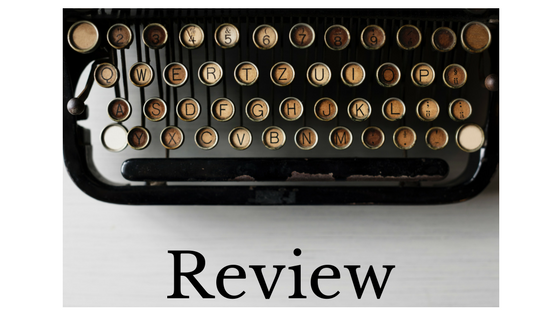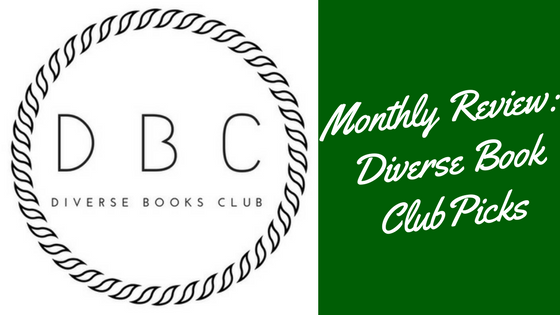The whites came to this land for a fresh start and to escape the tyranny of their masters, just as the freemen had fled theirs. But the ideals they held up for themselves, they denied others. Cora had heard Michael recite the Declaration of Independence back on the Randall plantation many times, his voice drifting through the village like an angry phantom. She didn’t understand the words, most of them at any rate, but created equal was not lost on her. The white men who wrote it didn’t understand it either, if all men did not truly mean all men. Not if they snatched away what belonged to other people, whether it was something you could hold in your hand, like dirt, or something you could not, like freedom….

Summary
In Cora’s world, the Underground Railroad is not merely a network, but an actual railroad running from the slave states of the south to the perceived freedom of the north. Cora, an outsider even among the slaves on the plantation where she grew up and orphaned by a mother who ran north years before, has never had a good enough reason to run until a few days after our book begins. In The Underground Railroad, as Cora flees Georgia, each geographical state she passes through represents one of the states, forms, or ideas of how to address Black Americans in the 1800s. In many ways, vestiges of these “solutions” remain alive today.
Interspersed with the state chapters are vignettes of minor characters including the man who runs with Cora, the slave catcher chagrinned with having never caught Cora’s mother and obsessed with catching Cora, and even (lastly) Cora’s mother. The timeline presented is loosely linear as time bounces around a bit with Cora’s remembrances and the flashback vignettes, adding to the reader’s overall sense of being detached from time. This detachment adds to the sense that much of what is happening could be happening today.
Time & Timeliness
The Underground Railroad is, like Beartown, a book I read before I was blogging but that I wanted to revisit and write about. Other books had been published more recently and always seemed to be more urgent to write about (“urgent” being relative and, in this case, entirely self-defined and imposed). And yet, just two weeks ago there was discussion on Facebook of a University of Alabama student expelled for saying she “hates N-words” and can use that word as much as she wants. The President of the United States is talking about immigrants from shithole countries. Here we are. 2018. While slavery of African Americans is officially eradicated in the United States, the states through which Cora and her companions traveled are still alive and well in America today.
Georgia
In Georgia (where our book starts) is brutal slavery—Cora lives on the Randall plantation, owned by two brothers, each representing one of the extremes of slaveholding. James is the “kinder” slaveholder, a bit more reticent to punish, not unnecessarily harsh (ignoring, of course, that the idea of owning another person is of itself automatically unnecessary and harsh). Terrence is the opposite; the slaves are there for his amusement and his amusement includes rape and beatings. While one of these treatments is preferable to the other in the day-to-day, both are slavery. Both are predicated on ideas of supremacy and values of human life that change based on the color of ones skin. Even “benevolence” is brutal.
As expected, Whitehead does not shy away from the brutality of slavery—Cora witnesses beatings and is herself beaten and raped. These events are described (though not gratuitously—Whitehead hits the right balance here), including the one that served as the straw that broke the camel’s back, so to speak, and sent Cora running. The only part about the Georgia chapters that were surprising to me was the cruelty she experienced at the hands of her fellow slaves before she left. My surprise at this was obviously my ignorance and failure to question other portrayals of slaves in other works—slaves who were loyal to each other, all family, all united with no dissent. Of course, enslaved African Americans were humans like any other—there were some who were selfless and others who were selfish. While they’re often portrayed as only selfless and helping of others in fiction and movies, this “magical negro” variant is unhelpful. Anything that removes ones humanity—be it degradation or overwrought elevation is harmful. Whitehead avoids this by portraying his black characters throughout as well-rounded, representative human beings, including black wrongdoers.
South Carolina
In South Carolina, Cora initially thinks she has come to someplace wonderful. She’s given a job and lessons. She is housed in a dormitory with a proper bed and shown signs of respect, including having white people nod to her and look her in the eye. After the brutality of the plantation and the overwhelming fear attendant to her flight, South Carolina originally seems like a peaceful place to be.
And yet shortly after Cora settles into her new life in South Carolina, little flags start to raise themselves. She is given a thorough and invasive physical exam including a rough gynecological exam. A seemingly crazy woman is dragged away yelling that these (“respectful”) white people are taking her babies. Shortly after, Cora finds her job reassigned, removed from being a nanny (reminiscent of the care of white children by African Americans that continued for more than one hundred years after the official end of slavery) and instead made part of a living history museum. Yet as Cora “reenacts” the highly sanitized version of slavery presented at the “history” museum for white children, she begins to see that South Carolina may not be the haven it seemed. History is still being told by the ones in power and the ones in power are all white. Even when life is better here, there is still an inviolable power dynamic that is not changed by the occasional handshake—there are simply different strings that still serve to tie blacks firmly down into their places.
Almost too late, Cora discovers what is really behind the courtesies and medical examinations in South Carolina and barely makes it out, catching a maintenance cart to a station that should be closed in North Carolina.
North Carolina
North Carolina is a new hell—the whites have solved the “black problem” by eliminating all blacks and those who attempted to help them. There are weekly hangings of any that have been rooted out, with the bodies left on the ironically, grotesquely named “Freedom Trail.” (“Freedom” being defined by the whites as being free altogether of African Americans.) In some ways similar to South Carolina, the “solution” is North Carolina is presented as the logical, thought-out conclusion to the “problem.”
Here Cora is forced to impose upon a couple that finds her but doesn’t want her. Martin feels obligated to fulfill his father’s legacy and take her in where Ethel resents the danger Cora has forced upon her family. Cora is forced into what is essentially an attic crawl space. Here Whitehead’s descriptions made me feel as if the walls and ceilings were closing in on me, in a space that feels more and more like it could become Cora’s coffin. From Cora’s perch in hiding, she has one view—the view of the square where the weekly hangings are. Because life in a coffin isn’t bad enough, she must constantly be reminded of what is outside the coffin. When the family is betrayed, Cora is again on the move.
Tennessee
Cora next finds herself in Tennessee. It is nearly impossible to write much further about the events in Tennessee without providing significant spoilers, so there is less here that I can say. A handful of characters appear in Tennessee serving as allegories of larger issues and ideas in the history of the treatment of African Americans in this country. In Tennessee we first meet a black child who has so internalized the racism that he has voluntarily taken up with slave catchers and helps them to catch other African Americans. We also meet a group of black freemen with significantly different ideas about the use of violence in the struggle for black freedom, ideas reminiscent of the debates between adherents of Martin Luther King Jr.’s philosophies and those embraced by Malcolm X.
Indiana
Cora next finds herself on Valentine farm, a haven in the north for freemen and women. While whites are not banned, few of them find their way there—and these are typically whites that were involved with the stops on the Underground Railroad and so must seek refuge themselves. But even here, the haven cannot be a paradise. The farm has grown large enough that they are attracting attention and hatred from the white farmers whose lands bound the farm. There are discussions about whether to close their doors to any further fugitives. Whether they should be concerned with maintaining only their own freedom or whether they owe a duty to those still running to be the haven they will need in the weeks and months to come.
“We can’t save everyone. But that doesn’t mean we can’t try. Sometimes a useful delusion is better than a useless truth. Nothing’s going to grow in this mean cold, but we can still have flowers.
“Here’s one delusion: that we can escape slavery. We can’t. Its scars will never fade. When you saw your mother sold off, your father beaten, your sister abused by some boss or master, did you ever think you would sit here today, without chains, without a yoke, among a new family? Everything you ever knew told you that freedom was a trick—yet here you are. Still we run, tracking by the good full moon to sanctuary….
“And America, too, is a delusion, the grandest one of all. The white race believes—believes with all its heart—that it is their right to take the land. To kill Indians. Make war. Enslave their brothers. This nation shouldn’t exist, if there is any justice in the world, for its foundations are murder, theft, and cruelty. Yet here we are….”
Ultimately, the whites cannot let this haven be untouched. No place of Black freedom and prosperity, even now, can thrive without jealousy and a white, entitled sense of the reversal of the order of things.
Recommended
The Underground Railroad was timely when it was published more than a year ago and remains so today. Neo-nazis are not new; however, it seems that in the last two years they have been emboldened into no longer feeling they have to hide. They’ve lost the sense that as a society we will reject them—largely because we haven’t. There is always work I can and should be doing, as a possessor of almost all of the privileges—white, cis-gendered, and able-bodied. I find books like The Underground Railroad to be helpful in making me think through my privilege in different ways, to connect what happened back then with what is still very much happening now. While the book does have some brutal depictions of slavery, it is never gratuitous and so is a book I recommend (particularly for white readers) without hesitation.
Notes
Published: August 2 2016 by Doubleday (@doubledaybooks)
Author: Colson Whitehead (@thecolsonwhitehead)
Date read: September 16, 2017
Rating: 4 ¾ stars






 Secret Daughter
Secret Daughter





